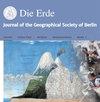资源萨尔塔。葡萄种植、大豆种植和有争议的土地商品化
IF 0.6
4区 地球科学
Q3 GEOGRAPHY
引用次数: 1
摘要
近年来,土地租赁和购买的重要性和国际化程度的提高引发了激烈的科学讨论。在这样做的过程中,大多数研究试图通过分析宏观经济数据和结构来得出土地热的程度和相关性的结论。在我们的论文中,我们通过应用民族志、地方-区域视角扩展了这一分析。阿根廷在20世纪90年代经历了一个强大的新自由主义阶段;农业现代化,特别是农业全球化发挥了核心作用。土地利用的集约化与新的演员星座相结合,土地所有权和租赁结构从根本上发生了变化。在这个国家背景下,我们对比了萨尔塔省的两个生产外围:安第斯卡尔查基山谷的葡萄种植和查科低地的大豆种植。在查科大豆生产的背景下,土地重组伴随着演员的出现,这些演员遵循资本积累的短期逻辑(几乎完全通过租赁关系)。通常情况下,所谓的siembra(由金融资本驱动)或国家农业行动者利用查科萨尔特诺作为扩张领土和分散风险的场所,促进单一功能的土地使用。相比之下,卡尔查基山谷的葡萄酒企业主要遵循长期逻辑:通过购买土地和在种植和灌溉方面的高水平投资,为国内和国际利基市场生产高质量的葡萄酒。由于葡萄酒与舒适品质和社会地位的联系,旅游和房地产热潮已经出现,其中(剩余)资本的储存和投机是一个至关重要的因素。由于价格大幅上涨,土地成为一种有吸引力的资本投资。我们论文的目的是分析和对比各自研究区域的土地利用变化,通过这样做,我们的目标是为正在进行的关于拉丁美洲当前土地热潮/土地掠夺的讨论做出贡献。本文章由计算机程序翻译,如有差异,请以英文原文为准。
Resourcing Salta. Viticulture, soy farming and the contested commodification of land
In recent years, the increased significance and internationalisation of land tenancy and purchase has led to intensive scientific discussions. In so doing, a majority of the studies try to draw conclusions of the extent and relevance of the land rush by analysing macro-economic data and structures. In our paper, we extend this analysis by applying an ethnographic, local-regional perspective. Argentina has experienced a strong neo-liberal phase in the 1990s; modernisation and particularly globalisation of agriculture has played a central role. The intensification of land use was coupled with new actor constellations, whereby land ownership and tenancy structures changed fundamentally. Embedded in this national context we contrast two production peripheries in the province of Salta: viticulture in the Andean Calchaqui Valleys and soy farming in the Chaco lowlands. In the context of the Chaco’s soy production the agrarian restructuring goes along with the appearance of actors fol-lowing a short-term logic of capital accumulation (almost exclusively through tenancy-relationships). More often than not, so-called pooles de siembra (driven by financial capital) or national agro-actors use the Chaco Salteno as expansion territory and for risk diversification, fostering monofunctional land use. In contrast, actors of wine business in the Calchaqui Valleys follow predominantly long-term logics: Via land purchase and high-level investments in cultivation and irrigation quality wines are produced for a national and international niche market. Due to the association of wine with amenity quality and social status, a tourism and real estate boom has emerged, whereby the storing of and speculation with (surplus) capital is a crucial factor. Land becomes an attractive capital investment due to massively rising prices. The goal of our paper is to analyse and contrast land use changes in the respective study areas and, by doing so, we aim to contribute to the ongoing discussion on the current land rush/land grabbing in Latin America.
求助全文
通过发布文献求助,成功后即可免费获取论文全文。
去求助
来源期刊

Erde
GEOGRAPHY, PHYSICAL-GEOSCIENCES, MULTIDISCIPLINARY
CiteScore
2.90
自引率
6.20%
发文量
0
审稿时长
>12 weeks
期刊介绍:
DIE ERDE is a publication of the Geographical Society of Berlin
DIE ERDE is a scientific journal in Geography, with four issues per year with about 100 pages each. It covers all aspects of geographical research, focusing on both earth system studies and regional contributions.
DIE ERDE invites contributions from any subfield of both Physical and Human Geography as well as from neighbouring disciplines.
 求助内容:
求助内容: 应助结果提醒方式:
应助结果提醒方式:


